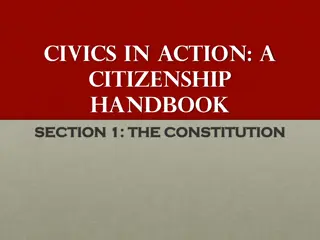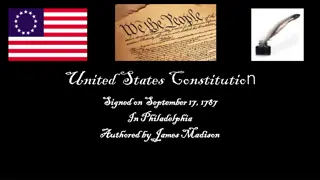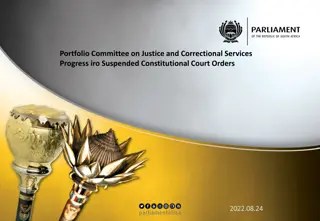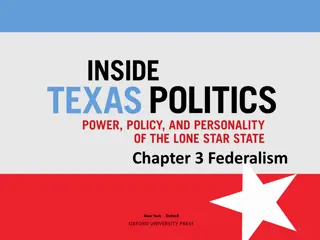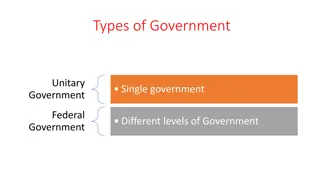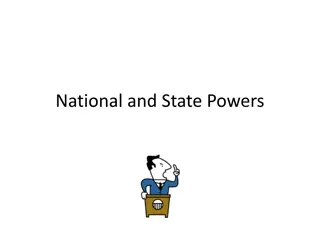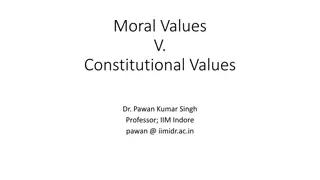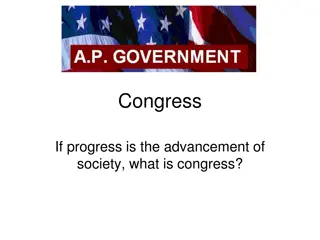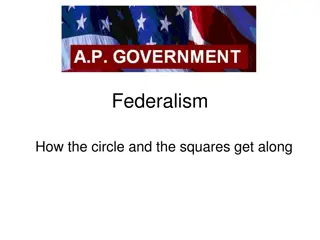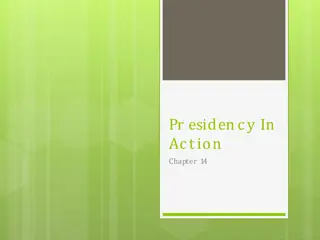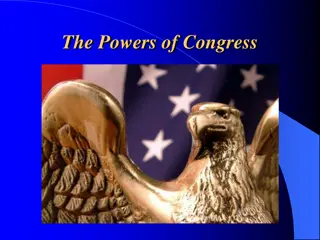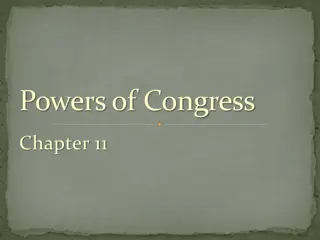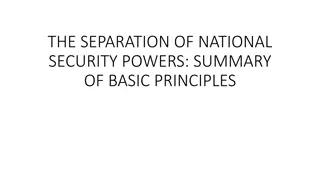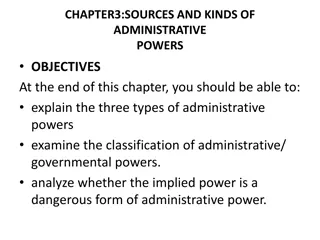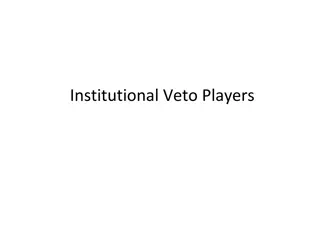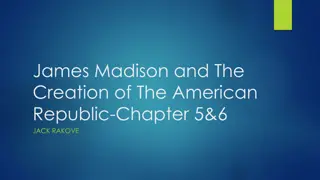Understanding Federalism: Divided Powers and Constitutional Framework
Federalism is a system where powers are divided between a central government and regional entities. It involves delegated, reserved, exclusive, and concurrent powers outlined in the Constitution. The supremacy of the Constitution is pivotal in establishing a unified federal government.
Download Presentation

Please find below an Image/Link to download the presentation.
The content on the website is provided AS IS for your information and personal use only. It may not be sold, licensed, or shared on other websites without obtaining consent from the author. Download presentation by click this link. If you encounter any issues during the download, it is possible that the publisher has removed the file from their server.
E N D
Presentation Transcript
Federalism a system of government in which a written constitution divides the powers of government on a territorial basis between a central government and several regional governments usually called states or provinces. Federalism produces a duel system of government. Division of Powers certain powers are assigned to the national government and certain powers are reserved for the states.
Delegated Powers the government has only those powers granted to it in the Constitution. 3 types: Expressed, Implied, & Inherent. Expressed: Powers specifically delegated to the national government. Also called the enumerated powers . Implied: Powers that aren t expressly stated but are reasonably suggested. (the necessary & proper clause (a.k.a. the elastic clause) convenient & useful) Inherent: Powers that belong to the national government because it s the national government of a sovereign state.
Reserved: Powers that are not given to the national government but, at the same time, are not denied to the states. Exclusive: Powers that can only be exercised by the national government and cannot be exercised by the states under any circumstances. Concurrent: Powers that both the state and national governments possess and exercise.
Means that the Constitution is the supreme law of the land and that it ranks above all other forms of law in the United States Called the linchpin of the Constitution because it joins the national government and the states into a single governmental unit, a federal government.




